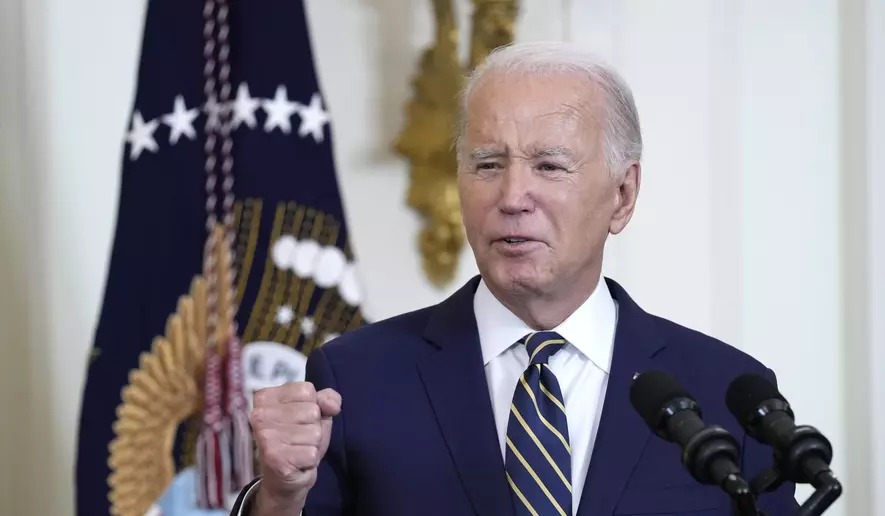
Biden’s Bold Move: Healthcare Cost Cuts
Biden’s Bold Move: Healthcare Cost Cuts
In a significant step to address the soaring healthcare cost cuts, President Joe Biden recently unveiled a sweeping executive order aimed at reducing out-of-pocket expenses for Americans. With healthcare costs continuing to climb, particularly for prescription drugs and health insurance premiums, the new reforms seek to ease the financial burden on families across the country. This bold move signals a decisive shift in how the U.S. government plans to tackle one of the most pressing issues facing American families today.
The Growing Problem of Rising Healthcare Costs
Healthcare costs have been a major concern for American families for decades. According to a 2023 study by the Kaiser Family Foundation, the average annual premium for employer-sponsored health insurance reached over $22,000 for a family of four. Meanwhile, prescription drug prices have increased at a rate far outpacing inflation, with many life-saving medications becoming unaffordable for millions of Americans.
For lower-income families and seniors on fixed incomes, these rising costs often lead to tough decisions—whether to pay for medications, delay necessary treatments, or skip doctor’s appointments altogether. The Biden administration has acknowledged that these issues disproportionately affect those without access to robust insurance plans and is using its executive powers to address them directly.
President Biden’s new executive order, titled “Reducing Healthcare Costs and Increasing Access to Affordable Care,” aims to tackle both prescription drug pricing and the rising premiums that are pushing many Americans to the brink of financial instability.
Key Components of Biden’s Executive Order
The executive order includes several provisions designed to lower costs for consumers. Among the most notable are the following:
- Price Negotiation for Prescription Drugs
One of the most contentious issues in American healthcare has been the high price of prescription drugs. The new order builds on legislation passed in 2022 that allows Medicare to negotiate prices directly with pharmaceutical companies for certain high-cost medications. Biden’s executive order expands these provisions, with the goal of negotiating prices for even more medications across a broader range of medical conditions. By cutting down on the cost of prescription drugs, the administration hopes to save families hundreds, if not thousands, of dollars annually. - Capping Insulin Costs
Another key element of the executive order is a new initiative to cap insulin prices at $35 per month for insured individuals. Insulin, a vital drug for millions of people with diabetes, has seen its prices skyrocket in recent years, with some Americans paying upwards of $1,000 per month for insulin treatment. This price reduction is expected to help those who rely on this critical medication and provide relief to those most vulnerable to cost hikes. - Limiting Out-of-Pocket Health Insurance Expenses
The order also seeks to limit out-of-pocket expenses for Americans with health insurance. This includes implementing new rules for insurers to cap out-of-pocket maximums, which could provide significant savings for families. For instance, individuals with certain chronic conditions may no longer face high deductibles or co-pays that force them to delay or forgo necessary care. - Expanding Access to Affordable Care
To ensure that more Americans have access to affordable health coverage, Biden’s executive order also encourages the expansion of the Affordable Care Act (ACA). This includes expanding subsidies for middle-income families, helping to lower premiums and making coverage more accessible. Additionally, the administration is pushing for the establishment of more state-run insurance marketplaces to increase competition and lower premiums. - Encouraging Price Transparency in Healthcare
A key feature of the executive order is a push for greater price transparency in the healthcare industry. Many patients are often unaware of how much their care will cost until after the treatment is rendered. By requiring hospitals and insurance companies to disclose prices up front, the administration hopes to create a more competitive environment and help consumers make better-informed decisions.
The Impact of Healthcare Cost Cuts on American Families
The healthcare cost cuts proposed by Biden are expected to have a significant impact on millions of Americans. For families struggling to keep up with rising healthcare premiums, these reforms could mean the difference between being able to afford necessary care and going without. By addressing both prescription drug costs and health insurance premiums, the executive order aims to reduce the overall financial strain on families, improving access to essential medications and treatments.
For seniors, who often face the highest out-of-pocket healthcare costs, the expansion of Medicare price negotiations and the insulin cap could provide much-needed relief. Seniors living on fixed incomes are particularly vulnerable to rising drug prices, and Biden’s reforms are aimed at curbing these costs before they become untenable.
Moreover, the push for increased competition in the insurance market could drive down premiums for middle-class Americans, making healthcare coverage more affordable and accessible. With the ACA subsidies in place, the burden on the average American family could decrease significantly, helping them to access healthcare without the fear of financial ruin.
The Politics of Healthcare Reform
While the Biden administration’s efforts to tackle healthcare cost cuts are a step forward, the road ahead remains uncertain. Healthcare reform has long been a contentious issue in U.S. politics, with differing opinions on how best to address the rising costs. Some Republicans have criticized Biden’s approach, arguing that government intervention will only increase costs and reduce the quality of care. They believe that market-based solutions, such as deregulating the healthcare industry, would be more effective.
On the other hand, progressive lawmakers and healthcare advocates argue that these reforms do not go far enough in addressing the systemic issues within the U.S. healthcare system, such as the lack of universal coverage. Many believe that the U.S. should move toward a Medicare for All system, where the government provides universal health coverage for all citizens.
Despite these political divides, President Biden’s executive order represents a major step in addressing one of the most critical issues in the U.S. today. By taking action on healthcare costs, the administration is responding to the urgent needs of American families and attempting to curb the unsustainable rise in healthcare expenses that have plagued the system for decades.
Challenges Ahead: Can Biden’s Reforms Succeed?
While Biden’s executive order has the potential to reduce healthcare costs for many, there are challenges ahead. Some of the provisions, particularly those involving price negotiations and insurance regulations, will face significant opposition from powerful interest groups, including the pharmaceutical and insurance industries.
In addition, the success of the reforms will depend on how they are implemented at the state and local levels. Some states may resist expanding Medicaid or establishing their own insurance marketplaces, making it more difficult to achieve nationwide changes.
Moreover, the political landscape in Washington remains volatile, and future administrations may seek to reverse or modify these reforms. As a result, the future of healthcare cost reductions remains uncertain, and advocates will need to continue pushing for further reforms to ensure long-term change.
Conclusion
President Biden’s bold move with the new executive order represents a significant step forward in efforts to reduce healthcare cost cuts and make healthcare more affordable for Americans. By addressing prescription drug prices, capping insulin costs, limiting out-of-pocket expenses, and expanding access to care, the Biden administration aims to provide much-needed relief to families struggling with high medical costs.
However, the success of these reforms will depend on overcoming political opposition and implementing the changes effectively. For now, American families can look forward to some much-needed relief as these changes begin to take shape.
For more information on the Biden healthcare reforms and ongoing healthcare policy changes, visit the U.S. Department of Health and Human Services and the Kaiser Family Foundation.
External Links:
- U.S. Department of Health and Human Services (HHS)
- Kaiser Family Foundation – Healthcare Costs
- Health Affairs – The Impact of Healthcare Reforms
Image credit – AP Photo/Susan Walsh


